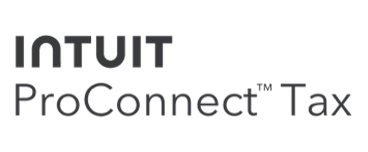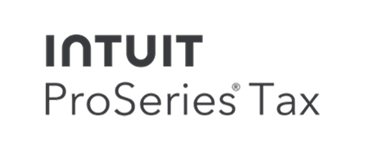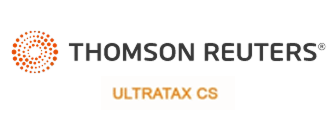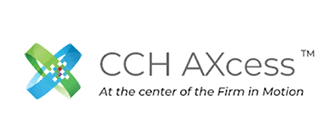Table of Contents
- Introduction
- The Conversation Your Clients Are Already Having (Without You)
- Before You Talk to Clients, Get Crystal Clear on What You're Actually Using
- How to Have the Conversation (Without Sounding Like a Salesperson)
- Make Transparency Your Default
- Reframe Modernization as a Security Upgrade, Not a Risk
- What Happens When You Get This Right
- A Final Thought: This Is About More Than AI
- Ready to Put This into Practice?
To many people, “AI” means greater opportunities and efficiency — a powerful tool. To your clients, though, “AI” is often a red flag. They’ve seen the headlines about data breaches and “learning” algorithms, and they’re right to wonder: Is my information safe?
That puts firms like yours in a tricky spot. You know the right AI technology can make tax season less stressful for everyone involved, but your clients don’t automatically see it that way. They see risk and unknowns.
And in an industry built on trust, unknowns are deal-breakers.
Meanwhile, the accounting profession isn’t waiting around. Nearly 73% of accounting firms use some form of AI technology to automate routine tasks, and the global market for AI in accounting reached $5.5 billion in 2024, projected to grow at more than 25% annually through 2034.
But trust isn’t catching up as adoption accelerates. Surveys show that nearly 50% of U.S. adults feel more concerned than excited about AI’s role in daily life. So, no… you’re not imagining the resistance. It’s widespread, and it’s not going away just because the technology is improving.
For clients to trust you — and to see your firm as one that thinks three steps ahead — you need to turn their skepticism into understanding.
This guide gives you the framework to turn client skepticism into understanding — and understanding into the kind of trust that makes your firm stand out. We’ll start where most firms don’t: with the conversation your clients are already having.
A note about this guide:
While the principles in this guide may apply to any private AI tool built for accounting firms, we reference SmartRequestAI™ — our client intake solution — because we’ve had these exact conversations with customers. We’ve seen what works, what doesn’t, and what questions clients actually ask. And we figured the best way to help you navigate this is to show you how we talk about it, so you can adapt the language to your own tools and clients.
If you’re a SmartVault customer, consider this your field guide. If you’re not, treat it as a framework you can apply to whatever AI tools you’re evaluating or using. Either way, the goal is the same: help your clients feel informed, safe, and confident.
The Conversation Your Clients Are Already Having (Without You)
Here’s what’s happening, whether you realize it or not:
- Your clients are Googling “Is AI safe for tax documents?“
- They’re reading Reddit threads about data breaches.
- They’re asking their friends, “My accountant says they’re using AI now — should I be worried?“
And if you haven’t addressed it proactively, they’re filling in the blanks themselves with fear, worst-case scenarios, or whatever clickbait headline they scrolled past at 11 p.m. while doom-scrolling in bed.
That’s the invisible cost of silence. You think you’re avoiding an awkward conversation, but your clients are having it anyway just without your voice in the room.
What clients are actually worried about
Most clients aren’t anti-technology. They’re anti-risk. They’ve watched major companies lose customer data. They’ve heard about AI systems that “learn” from everything users type into them. And now you’re telling them you’re using AI to handle their most sensitive financial information? Of course they’re nervous.
The good news is that their concerns are predictable. Most fall into one of three categories:
- “Will my data be used to train this thing?” (Translation: Is my tax return going to end up teaching some model that other people will use?)
- “Does this mean a robot is doing my taxes?” (Translation: Are you outsourcing my return to something that doesn’t understand my situation?)
- “Who else can see my information?” (Translation: Is this thing connected to the internet, and if so, how?)
These fears are rational concerns from people who’ve seen what happens when technology and privacy collide. You need to meet these concerns head-on, with clarity and confidence.
Not every client will care
Some clients will barely blink when you mention AI. Others will be genuinely excited that you’re staying current. And yes, you’ll probably notice patterns: clients who’ve been slow to adopt online banking or mobile apps may need more reassurance than those who’ve been using your portal for years.
But you can’t predict who’s going to have questions based on age, industry, or tech comfort alone. I’ve seen 70-year-old clients who are thrilled about AI and 35-year-old clients who refuse to use anything that isn’t email. So instead of assuming resistance or assuming acceptance, the smarter approach is this: be ready to meet clients wherever they are.
That means:
- Proactively communicating with everyone (so the worried ones don’t have to ask)
- Tailoring your depth of explanation to each client’s curiosity level
- Not over-explaining to clients who trust you implicitly
Think of it like the shift from paper to digital portals. Some clients needed extensive walkthroughs and reassurance. Others logged in once, realized they could trust it, and never looked back. But having a clear, confident explanation ready for anyone who asked? That’s what made the transition smooth. This is no different.
So instead of guessing who needs reassurance, assume everyone deserves clarity, and tailor the depth from there.
Before You Talk to Clients, Get Crystal Clear on What You're Actually Using
Let’s say a client asks you point-blank: “Does your AI learn from my data?” If you hesitate — even for a second — you’ve lost them. It’s like when a restaurant server pauses before answering “Is this gluten-free?” Whether they say yes or no, their hesitation alone tells you everything you need to know — they’re not confident about their answer, so why should you be?
That’s why the first step is internal clarity. You need to know, specifically and confidently, what kind of AI you’re using, how it works, and what makes it different from the tools your clients’ neighbors warn them about.
The distinction that changes everything
There are two fundamentally different types of AI, and most clients (and frankly, most professionals) lump them together.
Public AI — like ChatGPT, Google’s Gemini, or other consumer tools — is designed to learn. You type something in, it processes your input, and that information contributes to making the system smarter for the next person. That’s the entire point. It’s built to improve through exposure to more data.
Private AI — the kind built for regulated industries like accounting — doesn’t work that way at all. It’s designed to process information within a closed system. It doesn’t train on your data. It doesn’t share insights across users. It operates in isolation, specific to your firm, your clients, and your secure environment.
When you can explain this confidently, you’re showing your clients that you’re using a specific, private, secure tool that was purpose-built for firms like yours.
Know your vendor’s answers before clients ask the questions
Here’s a short self-audit to make sure you’re ready:
- Can you explain, in one sentence, how your AI tool uses client data?
- Do you know whether it connects to external servers or operates entirely within your system?
- Can you name the compliance standards it meets (SOC 2, encryption protocols, etc.)?
- Do you know what happens to client data after it’s processed?
If you can’t answer those questions off the top of your head, your clients will sense it. And that hesitation — again, no matter how brief — will undermine everything else you say. But once you can answer them? Once you’ve done the homework and you know exactly what you’re working with? That’s when the conversation shifts from defense to confidence.
Now that you’re confident about how your tool works, it’s time to have the conversation and make transparency your default so clients never need to ask.
How to Have the Conversation (Without Sounding Like a Salesperson)
Meet clients exactly where they are: curious, cautious, and looking for reassurance that you’ve thought this through. You’re not defending technology. You’re going to confirm that you care.
Start with empathy, not explanation
When a client raises a concern about AI, your instinct might be to jump straight into explaining how the technology works. Resist that urge. Start by acknowledging that their concern is valid. That you had some of the same concerns when evaluating tools. That this isn’t a trivial topic. Here’s what that sounds like:
“I completely understand your concerns around privacy. I had some of the same concerns when evaluating tools. That’s why I chose a system that keeps your information private and contained — nothing you share leaves our secure environment.”
Notice what that does: it puts you on the same side of the table as your client. You’re not defending AI; you’re showing them that you already vetted it for them.
Explain the “what,” not the “how“
Clients don’t need a technical deep-dive into machine learning models. They need to understand what’s happening to their data in terms they can visualize. Here’s a simple explanation that works:
“There are different kinds of AI. The ones you hear about online — like ChatGPT — collect information to keep learning. The kind we use doesn’t learn from your data. It simply helps us organize what you send and create personalized checklists so you know exactly what we need, making tax season smoother for both of us.”
That’s it. No talk of algorithms or neural networks. Just a clear distinction between “AI that learns from you” and “AI that helps you and then moves on.”
Use an analogy that sticks
If clients still seem uncertain, give them something concrete to hold onto:
“Public AI is like shouting a question into a crowded room. You never know who’s listening. Private AI is like having a confidential conversation behind closed doors. It stays between us.”
Analogies like that don’t just explain; they reassure. They turn abstract concerns into something clients can picture and trust.
Connect it back to their experience, not your efficiency
A lot of firms talk about how AI saves them time. But clients don’t care about your efficiency as much as they care about their experience. So instead of saying, “This helps us gather your documents faster,” say this:
“This isn’t replacing me; it’s removing busywork. Instead of both of us digging through email threads, everything’s organized in one place. You’ll always know exactly what we still need, and I can spend more time on your return.”
Suddenly, AI isn’t about automation. It’s about reducing the client’s stress and making sure nothing slips through the cracks. That’s the emotional outcome that matters. That’s what builds loyalty.
Anticipate the follow-up questions
Even after a great initial explanation, some clients will dig deeper. And that’s a good sign — it means they’re engaged, not just nodding along. Here are the three most common questions SmartVault customers hear about SmartRequestAI and the answers we recommend:
“So no one else can see my data?“
“Correct. It operates entirely within the system. Your data never leaves SmartVault’s secure environment, and it’s never used to train or improve the tool for other users.”
“What if the system gets hacked?“
“That’s why we use tools with enterprise-grade controls (e.g., SOC 2 Type 2 Compliant), encryption, and audit trails — the same standards large firms rely on. We chose carefully because data security is non-negotiable.”
“Why not just stick with email?“
“Email was never designed to handle this much sensitive information. Every attachment is a potential risk if someone forwards it or their inbox gets compromised, which seems to be happening more and more every day. This system keeps everything contained, tracked, and secure from the moment you upload it.”
Using a different tool?
The principles are the same. Be ready to answer:
- Does it train on client data?
- Where does the data live?
- What compliance standards does it meet?
- What happens after processing?
- If your vendor can’t answer cleanly, that’s your red flag.
Once you can answer these questions confidently in one-on-one conversations, the next step is to create a clear, proactive statement about how you use AI so most clients never need to ask in the first place.
Make Transparency Your Default
Now that you can have these conversations confidently, it’s time to systematize them. The best client conversations about AI are the ones you never have to have. Not because you’re hiding anything, but because you’ve already communicated so clearly that clients don’t need to ask.
That’s what proactive transparency looks like. And in a world where less than half of people trust companies to protect their data when using AI, being the firm that communicates is a competitive advantage.
Create a simple, client-facing AI statement
You don’t need a long legal document. You just need to explain, in plain language:
- What tools you use and why
- What data they access
- What’s off-limits (no external sharing, no training on client data)
- How you ensure compliance and security
Here’s an example you can adapt:
Our Promise to Clients: We use SmartRequestAI, a secure, private tool built specifically for accounting firms, to help collect and organize your documents efficiently. None of your data is ever used to train or teach this system. Your information stays private, encrypted, and fully under our control — processed within SmartVault’s secure, SOC 2 Type 2-compliant environment and never shared externally.
That’s it. Short, human, and reassuring. Now, where does this statement live?
Put it where clients already look
Don’t make clients hunt for your AI policy. Put it where they’re already paying attention: in your engagement letter as a single paragraph that sets expectations before work begins or in your welcome packet alongside your other policies and procedures.
Turn questions into teachable moments
When a client asks about AI — and some will, no matter how proactive you are — don’t just answer and move on. Use it as an opportunity to invite deeper conversation:
“That’s a great question, and I’m glad you asked. A lot of clients wonder the same thing. Here’s how we handle it safely. And if you have any other concerns, I’m happy to walk through them.”
You normalize the concern, reinforce transparency, and keep the door open. This is how trust takes root.
Use visuals to make the invisible feel tangible
Some clients are visual learners. For them, a chart or diagram can be more reassuring than a hundred words. Consider creating a simple one-page visual that shows:
- The journey of a client document (from their computer → your secure portal → your system → back to them)
- A side-by-side comparison of public vs. private AI (like the one below)
- A checklist of security measures your firm takes (encryption, access controls, compliance certifications)
These don’t have to be fancy. In fact, simpler is better. The goal is to make the invisible feel visible, to show clients that their data follows a clear, protected path from start to finish.
But even with clear policies and confident conversations, some clients will still have one lingering concern: “Isn’t the old way safer?” Let’s address that head-on.
| Feature | Public AI | Private AI |
|---|---|---|
| Training on your data | Yes, your inputs may be used to improve the model for all users. | No, never trains on or learns from your data. |
| Data storage | May be stored indefinitely; subject to vendor’s terms of service. | Processed and discarded; not retained for training. |
| Where data lives | Public cloud infrastructure; data may pass through multiple servers. | Private, closed system within your secure environment. |
| Who can access your data? | Vendor + potentially used in aggregated datasets to train the model. | Vendor (for system maintenance only) + your authorized users. Never used for training or shared externally. |
| Compliance standards | Varies; often not built for regulated industries. | Built specifically for compliance-heavy industries like accounting. |
| Internet connectivity | Connected to the public internet. | Operates in a secure, private connection isolated from public traffic. |
| Best use case | General-purpose tasks (drafting emails, brainstorming ideas, writing code). | Sensitive, regulated workflows (tax prep, client intake, financial document handling). |
| Risk level for PII | High — uploading tax returns or financial data creates compliance and privacy risks. | Low — designed to handle PII securely within a controlled environment. |
Reframe Modernization as a Security Upgrade, Not a Risk
Here’s one of the biggest mental hurdles clients face: they assume that “new” means “risky.” That upgrading systems means introducing vulnerabilities. That the old way — email, phone calls, paper files — was somehow safer because it was familiar.
Your job is to gently, confidently flip that assumption on its head. Because really, outdated tools create more risk than modern, secure systems ever will.
Email was never built for this
Let’s start with the elephant in the room: email.
For years, it’s been the default way to exchange sensitive documents. Clients attach their tax returns, W-2s, 1099s, and send them off into the ether. Sometimes they remember to password-protect the files…but the password is usually something like “TaxDocs2025” sent in a follow-up email two minutes later, which kind of defeats the purpose.
Most clients don’t realize every time they hit “send,” they’re creating a record that lives in multiple places — their sent folder, your inbox, possibly your spam filter, and any server in between. If either of your accounts gets compromised, all of that sensitive information is sitting there, unprotected. Once clients see email in this way, they’ll realize modern tools aren’t the risk. Outdated tools are.
Human error is still the biggest vulnerability
Here’s something else worth pointing out: most data breaches don’t happen because of sophisticated hacks. They happen because someone sent an email to the wrong person, left a laptop in a coffee shop, or hit “reply all” when they meant to forward — accidentally sending the client’s full tax return to 47 people.
Guided, structured systems reduce those risks dramatically. When clients upload documents to a secure portal, they’re not guessing what to send or where to send it. They’re following a clear, step-by-step process that removes ambiguity. And when your team accesses those documents, they’re doing it within a controlled environment with audit trails, access logs, and encryption at every step.
That’s obviously more efficient and objectively safer.
“It’s not about making things faster. It’s about making sure nothing gets lost, mixed up, or exposed along the way. Every step is tracked, every file is encrypted, and there’s no guessing involved.”
This reframing — from “this is more convenient” to “this is more secure” — helps clients see modernization as protection, not experimentation.
Show them you’re being cautious, not reckless
Some clients will still worry that you’re moving too fast. That you’re chasing trends instead of prioritizing safety. That’s when you remind them: you’re not early adopters. You’re careful adopters.
“We didn’t jump on the first shiny tool we saw. We evaluated multiple options, asked hard questions about security and compliance, and chose a system specifically built for firms like ours. This isn’t about being cutting-edge. It’s about being protected.”
This distinction shows clients that you’re making methodical, informed decisions to strengthen how you protect their data.
Remember: AI Doesn’t Build Trust. You Do.
The explanations, the policies, the analogies, the proactive communication — none of it works if clients sense you’re reading from a script.
Because at the end of the day, technology doesn’t build trust. People do. Clients don’t trust your portal. They trust you. They don’t feel safe because of encryption protocols. They feel safe because you’ve shown them, over and over, that you take their concerns seriously.
So as you navigate these conversations, remember: you’re not a salesperson for AI. You’re a translator. You’re the bridge between cutting-edge tools and clients who just want to feel understood.
The firms that get this right handle objections while turning uncertainty into loyalty. Here’s what that looks like in practice.
What Happens When You Get This Right
This is about positioning your firm as the kind of practice that thinks ahead, communicates clearly, and earns trust even when the topic is uncomfortable. When you do this well, here’s what changes:
Clients stop worrying and start advocating
They’re not just okay with your use of AI — they’re impressed by it. They tell their friends, “My accountant is so on top of things. They’re modern. They’re easy to work with.” Word-of-mouth like that is worth more than any ad campaign.
You attract the clients you actually want
The clients who appreciate transparency, value security, and trust you to make smart decisions on their behalf? Those are the clients who stay for decades. The ones who resist every change and question every decision? They’ll self-select out — and that’s not a loss.
You differentiate yourself in a commoditized market
From the client’s perspective, a lot of tax prep feels identical. Same forms, same deadlines, same results. But the experience of working with you? Differentiation lives in the experience.
When you’re the firm that proactively addresses AI concerns, creates clear policies, and makes clients feel informed and respected, you’re not just another tax preparer. You’re a trusted advisor.
You build confidence that extends beyond technology
When you communicate well about AI, something subtle but powerful happens: clients start to see you as someone who’s thoughtful about everything. If you’re this careful about technology, they assume you’re just as careful about their deductions, their filing strategy, their long-term planning. Confidence in one area creates confidence everywhere else.
A Final Thought: This Is About More Than AI
The conversation around AI is really a conversation about trust.
It’s about whether clients believe you’re looking out for their best interests. Whether you’re making decisions that prioritize their safety over your convenience. Whether you’re willing to have hard conversations instead of hoping concerns just go away.
You already know how to build trust. You’ve been doing it for years. This is just one more way to prove it.
So when a client asks, “Wait…AI? What does that mean for my personal info?” — don’t panic. Don’t deflect. Take a breath, meet them with empathy, and show them exactly why your choice of tools reflects the same care you’ve always brought to their work.
AI isn’t what builds client confidence. You do. AI just gives you one more way to prove it.
A Final Thought: This Is About More Than AI
The conversation around AI is really a conversation about trust.
It’s about whether clients believe you’re looking out for their best interests. Whether you’re making decisions that prioritize their safety over your convenience. Whether you’re willing to have hard conversations instead of hoping concerns just go away.
You already know how to build trust. You’ve been doing it for years. This is just one more way to prove it.
So when a client asks, “Wait…AI? What does that mean for my personal info?” — don’t panic. Don’t deflect. Take a breath, meet them with empathy, and show them exactly why your choice of tools reflects the same care you’ve always brought to their work.
AI isn’t what builds client confidence. You do. AI just gives you one more way to prove it.
Ready to Put This into Practice?
If you’re a SmartVault customer:
We have everything you need to make these conversations effortless. But if you ever need help explaining it to clients, our team is here to support you.
If you’re exploring AI tools for your firm:
The questions in this guide should be at the top of your vendor evaluation list. If a tool can’t clearly answer how it protects client data, keeps information private, and meets compliance standards, keep looking. Your clients deserve better, and so do you.
Want to see how SmartRequestAI handles client intake securely?






